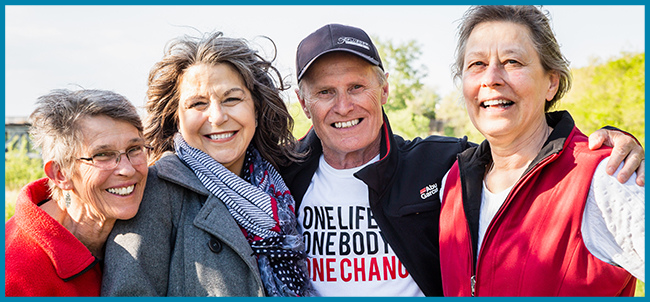Rhinovirus ‘Common Cold’
What causes the Common Cold?
The common cold is most often caused by rhinoviruses but can also be caused by parainfluenza viruses and seasonal coronaviruses (not the same as SARS-COV-2 that causes COVID-19). Colds caused by rhinoviruses occur more commonly in the spring and fall.
What are Rhinoviruses?
Rhinoviruses, also known as the common cold, cause infections of the lining of the nose, sinuses and throat. Rhinoviruses are the most common cause of colds. For healthy individuals, most colds do not cause serious health problems as the infection is typically mild. Young children and those with weakened immune systems have an increased risk of the infection travelling lower in the lungs causing pneumonia.
Is the Common Cold Contagious?
Yes. Rhinoviruses are easy to catch and spread to other people. Colds spread when people come in contact with nasal secretions from an infected person. Most often, the virus gains entry into the body through physical contact when people touch their mouth, nose, or eyes with their unclean hands. Less often, colds are spread when people breathe air containing droplets from coughing or by an infected person. A cold is most contagious during the first 1 or 2 days after symptoms develop.
Diagnosis
Common colds are diagnosed by observing or assessing symptoms. In general, lab tests (like blood tests or throat cultures) are not necessary to diagnose a cold.
If complications are suspected, doctors may order nasal or throat swabs, blood tests, and x-rays. A high fever, severe headache, rash, difficulty breathing, or chest pain are symptoms that could mean something else may be making you sick.
Signs & Symptoms
Usually, a person who has a cold won't have any signs or symptoms for the first 2 to 3 days. Once the symptoms start, they gradually worsen over the next 10 days, sometimes they will get better sooner.
- Sneezing
- Runny nose (clear, yellow or greenish color)
- Scratchy or sore throat
- Mild cough
- General feeling of being unwell
- Muscle aches
- Loss of appetite
Uncommon symptoms include:
- Fever (38.3°C–38.9°C)
- Headaches
Complications may prolong the disease. Colds often trigger flare-ups of lung diseases. Some people develop bacterial infections of the middle ear (otitis media) or sinuses (sinusitis). These infections develop because congestion in the nose blocks the normal drainage of those areas, allowing bacteria to grow.
Treatment
Most infections are mild, and no medication is needed. Antibiotics do not work for the common cold or other viruses. Antiviral drugs are not effective against colds.
- Drink plenty of water
- Rest at home to prevent spreading the cold to others
- Inhale steam or mist from a humidifier to relieve congestion
- If needed, use over-the-counter drugs to relieve symptoms. Talk to your pharmacist to see which might work best for you.
- Decongestants: can help open clogged nasal passages
- Antihistamines: may help dry a runny nose
- Fever and pain relievers: ibuprofen (Advil) or acetaminophen (Tylenol) can relieve aches and pains and reduce fever
- Cough syrups: may make coughing easier by thinning secretions and loosening mucus (expectorants) or which may suppress cough (suppressants)
Medication Contraindications in Children
- Some decongestants are not suitable for children under 6 years old
- No antihistamines should not be given to children under 2 years old.
- Aspirin is not recommended for children under 12 because it increases the risk of Reye syndrome, which is a rare but life-threatening disorder.
Prevention
There are no vaccines currently available to protect against rhinoviruses. There are several actions you can take to limit the risk of infection and passing it along.
- Wash your hands often
- One of the best preventive measures against viruses and other germs is practicing good hand hygiene. Because many viruses are spread through contact with the droplets of an infected person, washing your hands frequently with soap and water for at least 20 seconds is helpful to prevent catching a virus.
- Disinfect commonly touched surfaces
- It is recommended to clean all shared items and surfaces with disinfectants often to reduce the spread of the virus.
- Keep your distance
- If you have cold symptoms, it is best to stay home so you don’t get others sick. At home, try to keep your distance from other members of the household or wear a mask inside. When possible, sleep in a separate room. Keep infants who are sick away from any with the virus, due to their lowered ability to fight off germs. Limit exposure to large crowds as well.
- Wear masks
- Wearing a mask in crowded spaces can help prevent viruses from being spread. If you have to seek medical attention, ensure you are wearing a mask when leaving your home.
- Follow coughing and sneezing etiquette
- Sneeze and cough into a tissue and then throw it into the trash. If you do not have any tissues, cough or sneeze on the inside of your elbow, not your hands. After touching your nose or mouth you immediately wash your hands.
Viral Infections & Lung Disease
Viral infections can cause a flare-up or worsen symptoms for people with lung diseases such as asthma, COPD, and pulmonary fibrosis. Mucous can build up inside the airways causing irritation and worsening symptoms of your lung disease.
- If you have asthma, follow the advice in your asthma action plan or your child’s asthma action plan. If you have COPD, follow the advice in your COPD action plan. You may have to take extra medications to control your symptoms. If you do not have an action plan, work with your doctor to create one.
- If your symptoms are out of control or you don't know how to treat your lung disease, see your doctor as soon as possible.
- Watch for warning signs of severe symptoms as listed above. If you have these warning signs, get emergency help right away. Call your doctor if you are not improving after a few days.
- If it's hard to breathe or your rescue medicine isn't working, call 911 or your local emergency number.





